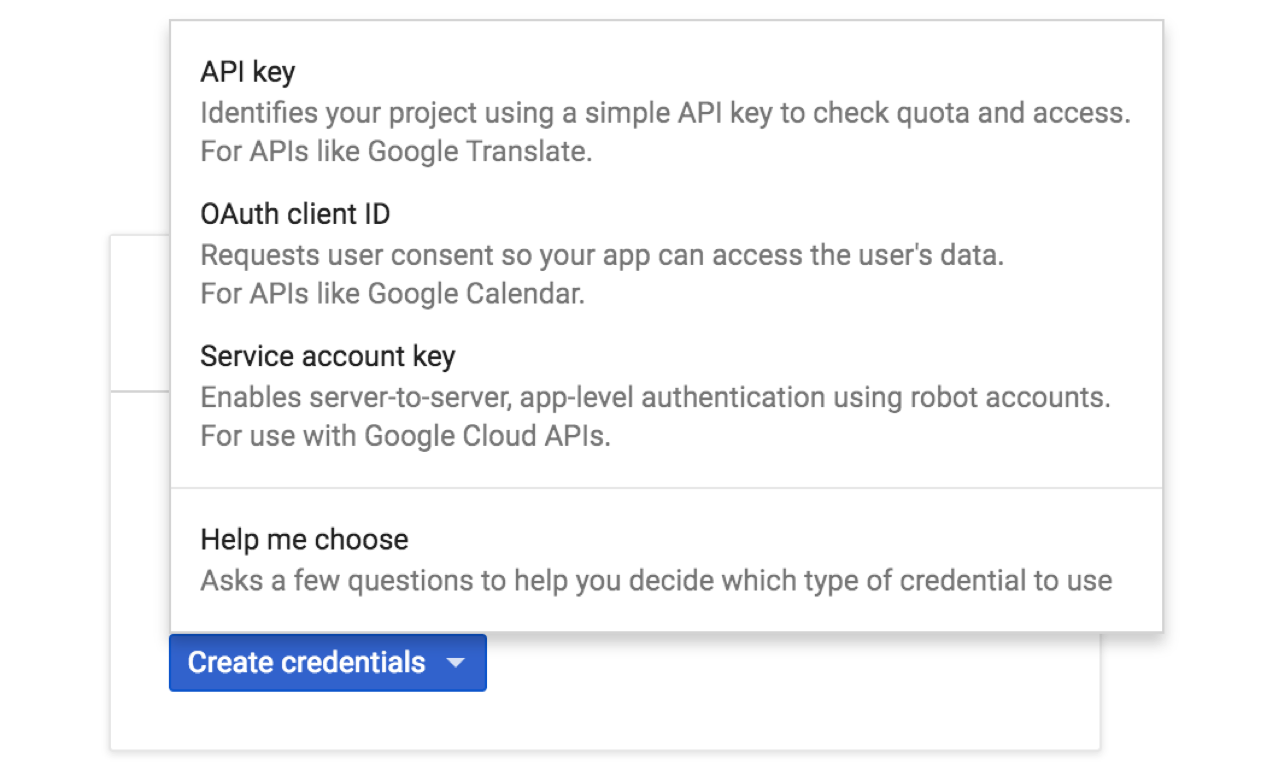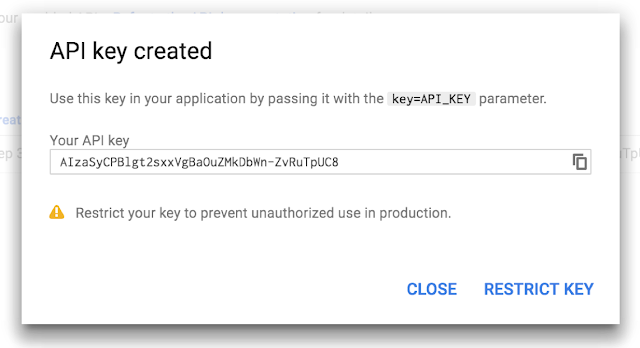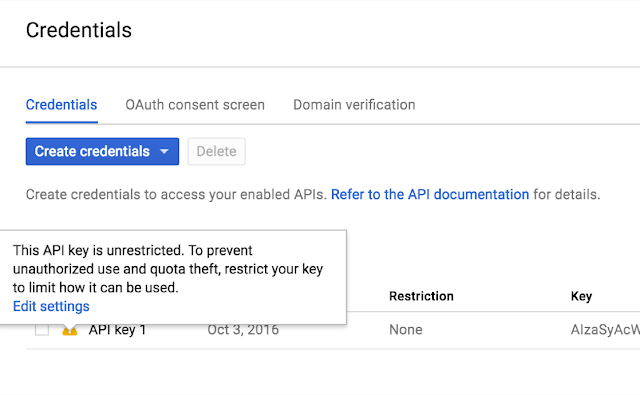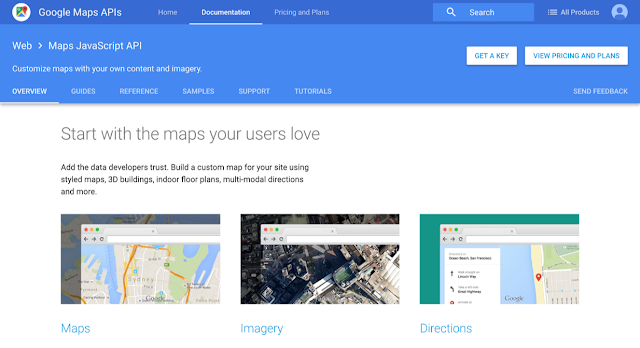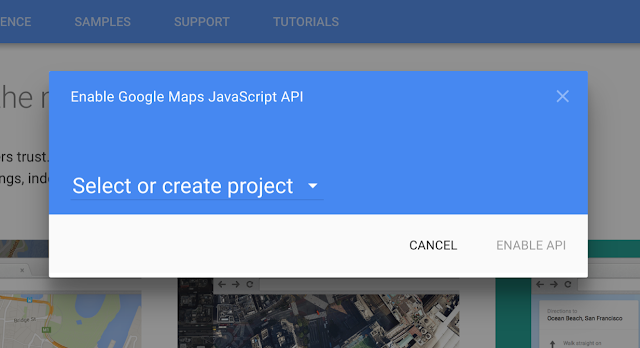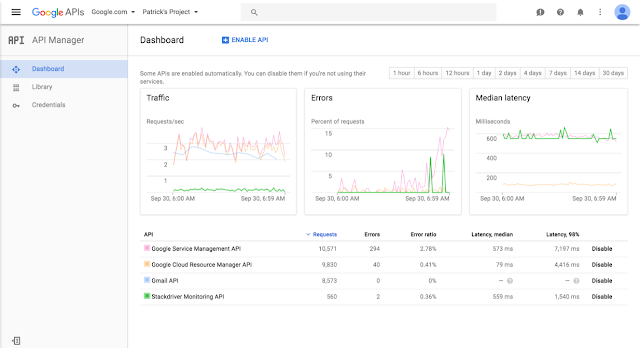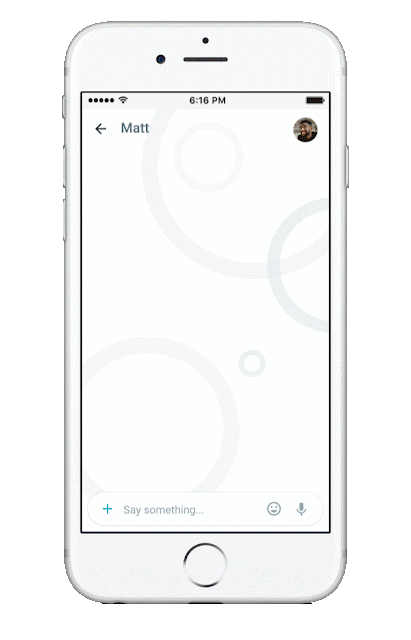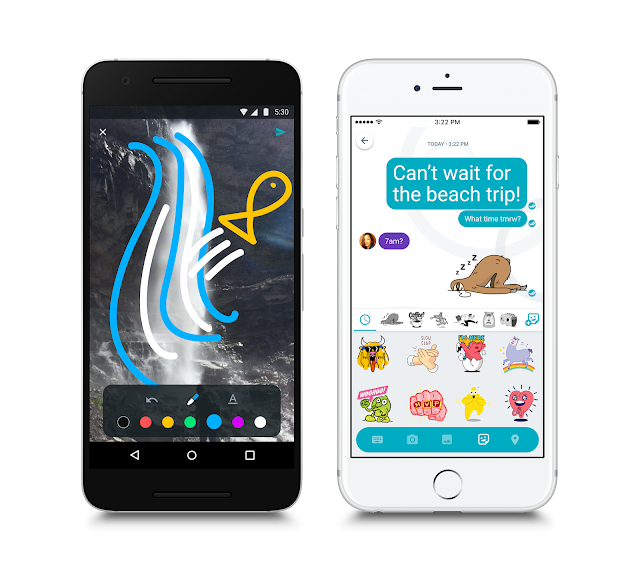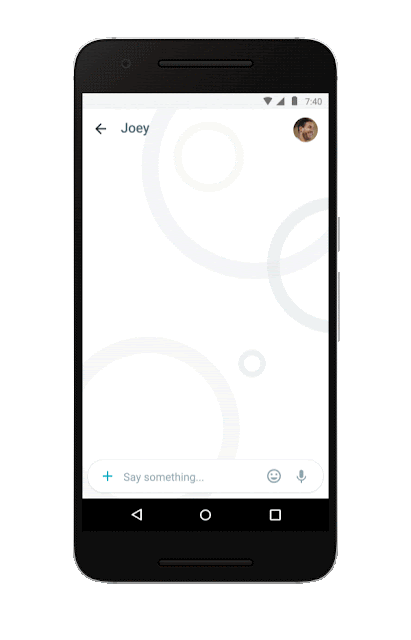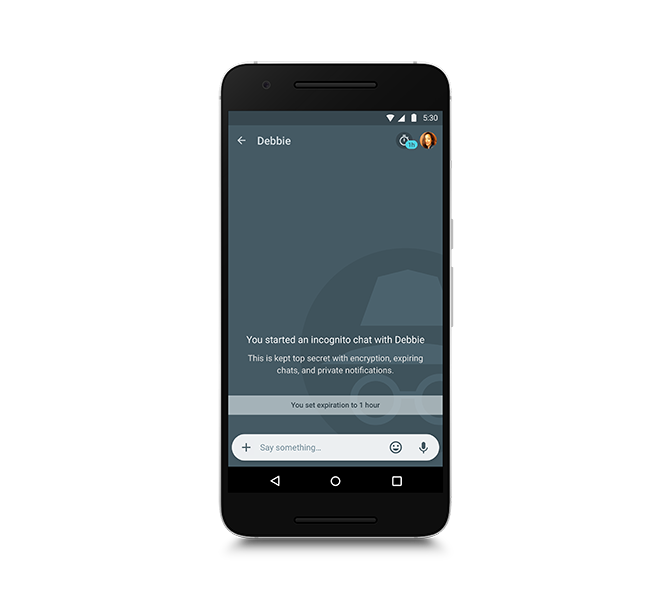Posted by Israel Shalom, Product Manager
Here at Google, we’re serving more than a hundred APIs to ensure that developers have the resources to build amazing experiences with them. We provide a reliable infrastructure and make it as simple as possible so developers can focus on building the future. With this in mind, we’re introducing a few improvements for the API experience: more flexible keys, a streamlined 'getting-started' experience, and easy monitoring.
Faster, more flexible key generation
Keys are a standard way for APIs to identify callers, and one of the very first steps in interacting with a Google API. Tens of thousands of keys are created every day for Google APIs, so we’re making this step simpler -- reducing the old multi-step process with a single click:
You no longer need to choose your platform and various other restrictions at the time of creation, but we still encourage scope management as a best practice:
Streamlined getting started flow
We realize that many developers want to get straight to creation and don’t necessarily want to step into the console. We’ve just introduced an in-flow credential set up procedure directly embedded within the developer documentation:
Click the 'Get a Key' button, choose or create a project, and then let us take care of enabling the API and creating a key.
We are currently rolling this out for the Google Maps APIs and over the next few months we'll bring it to the rest of our documentation.
API Dashboard
We’re not just making it easier to get started, we’re simplifying the on-going usage experience, too. For developers who use one or more APIs frequently, we've built the new API Dashboard to easily view usage and quotas.
If you’ve enabled any APIs, the dashboard is front and center in the API Console. There you can view all the APIs you’re using along with usage, error and latency data:
Clicking on an API will jump to a detailed report, where you’ll see the traffic sliced by methods, credentials, versions and response code (available on select APIs):
We hope these new features make your API usage easier, and we can't wait to see what you’re going to build next!
